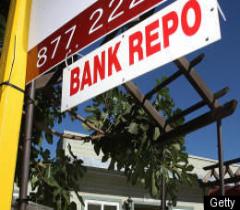 A deed in lieu of foreclosure allows you to return your home to the lender, without having to go through a formal foreclosure proceeding. As a last resort, you may be able to voluntarily “give back” your property to the lender.
A deed in lieu of foreclosure allows you to return your home to the lender, without having to go through a formal foreclosure proceeding. As a last resort, you may be able to voluntarily “give back” your property to the lender.
You will not be able to stay in your home. A deed-in-lieu of foreclosure is not as damaging to your credit rating as a foreclosure; however, it will be a negative mark on your credit history. This option is only available if there are no other liens or judgments on the property.
How the Deed-in-Lieu Works
The lender will have you sign legal documents such as a Quit Claim Deed, Grant Deed, Agreement in Lieu of Foreclosure and Warranty. These documents are usually signed by the lender and homeowner and convey legal ownership of the property back to the lender.
You have to pay attention to the paperwork your lender gives you during this process. The lender may try to get you to sign a promissory note which would be your promise to pay the lender some amount of money towards the loss the lender is taking by doing a deed-in-lieu of foreclosure.
To avoid this, the homeowner should get a document such as the original note marked as “paid.” The lender should also provide the homeowner with documentation showing the debt has been canceled and documentation showing the lender has waived their rights to a deficiency judgment.
A deficiency judgment would give the lender the right to request any unpaid debt not recovered by a sale of the property. All paperwork and documentation should reflect the homeowner (borrower) is totally released from the liability of the mortgage payments.
The Mortgage Forgiveness Debt Relief Act of 2007 excludes the forgiven debt so you will not have to pay taxes on the canceled debt. The homeowner should contact the IRS for information on reporting the cancelled debt on federal tax returns because certain conditions must be met to qualify.
Check your state government because many states have put legislation in place to prohibit lenders from going after homeowners when a deficiency occurs.
















